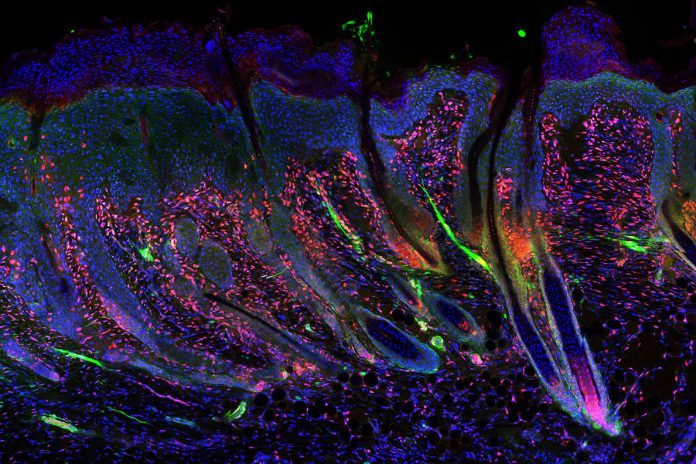
Genetic factors, responsible for causing skin regeneration in neonatal mice, identified by researchers at Washington State University (WSU).
Unlike Salamanders and starfish, humans lack the ability of skin regeneration.
However, Dr. Michael Longaker of Stanford University discovered babies he had performed in-utero surgeries on emerged from the womb without any scars. This led him to conclude that embryonic and neonatal skin possesses the ability to regenerate skin without scarring.
Ryan Driskell, an assistant professor in WSU’s School of Molecular Biosciences, inspired by this discovery set out to investigate the mechanism behind this ability. He conducted his research in mice.
Human and mouse skin are similar in overall structural complexity thus, making it useful for studying skin regeneration.
Skin Regeneration in Mice
Wound healing is associated with scar formation, especially in burn victims. Scars, however, are more than just a cosmetic concern. They lack hair follicles and sweat glands that can hinder a person’s functioning and movement.
Similar to newborns, neonatal mice skin also has the capacity to regenerate skin containing hair follicles and, heal wounds without any scars. The molecular switch responsible for this transformation turns off after the formation of new skin and remains off in adult tissue.
Molecular Switch Turned On
According to the study published in the journal eLife, a transcription factor called Lef1 acts like the molecular switch and regenerates new skin containing hair follicles in neonatal mice.
Lef1 primes new skin by forming papillary fibroblasts. These fibroblasts form hair follicles and maintain tension in the skin, giving it a youthful appearance.
The team of researchers therefore hypothesized that reactivation of the molecular switch in adults can help regenerate adult skin as in an infant.
Researchers tested their hypothesis by creating mice with mutations in the genetic factor thus, activating the molecular switch in adulthood. Small wounds were then given to the mice and their wound healing was observed.
The team of researchers observed the adult skin regenerated without scarring and even included hair follicles that could cause goosebumps.
We were able to take the innate ability of young, neonatal skin to regenerate and transfer that ability to old skin. We have shown in principle that this kind of regeneration is possible.
Ryan Driskell
In conclusion, researchers believe Lef1 mutations can have strong implications in humans. Eventually, preventing aging and leading to better skin repair post-surgery.
However, there’s still a long way to go before the research is translated into humans.
Reference:
Phan, Quan M, et al. “Lef1 Expression in Fibroblasts Maintains Developmental Potential in Adult Skin to Regenerate Wounds.” ELife, vol. 9, 2020, doi:10.7554/elife.60066.



